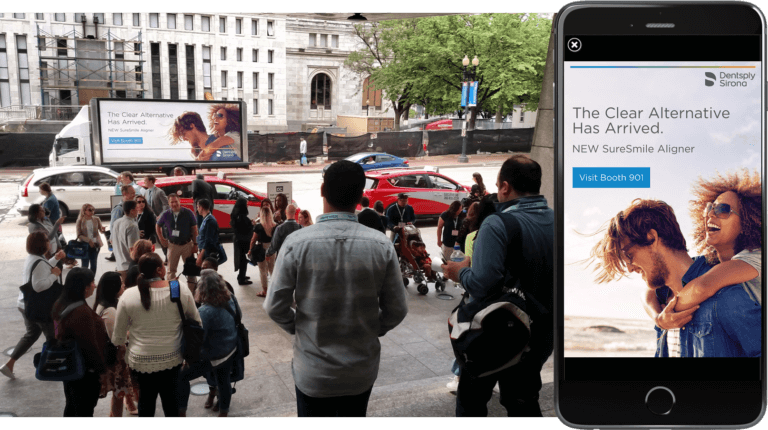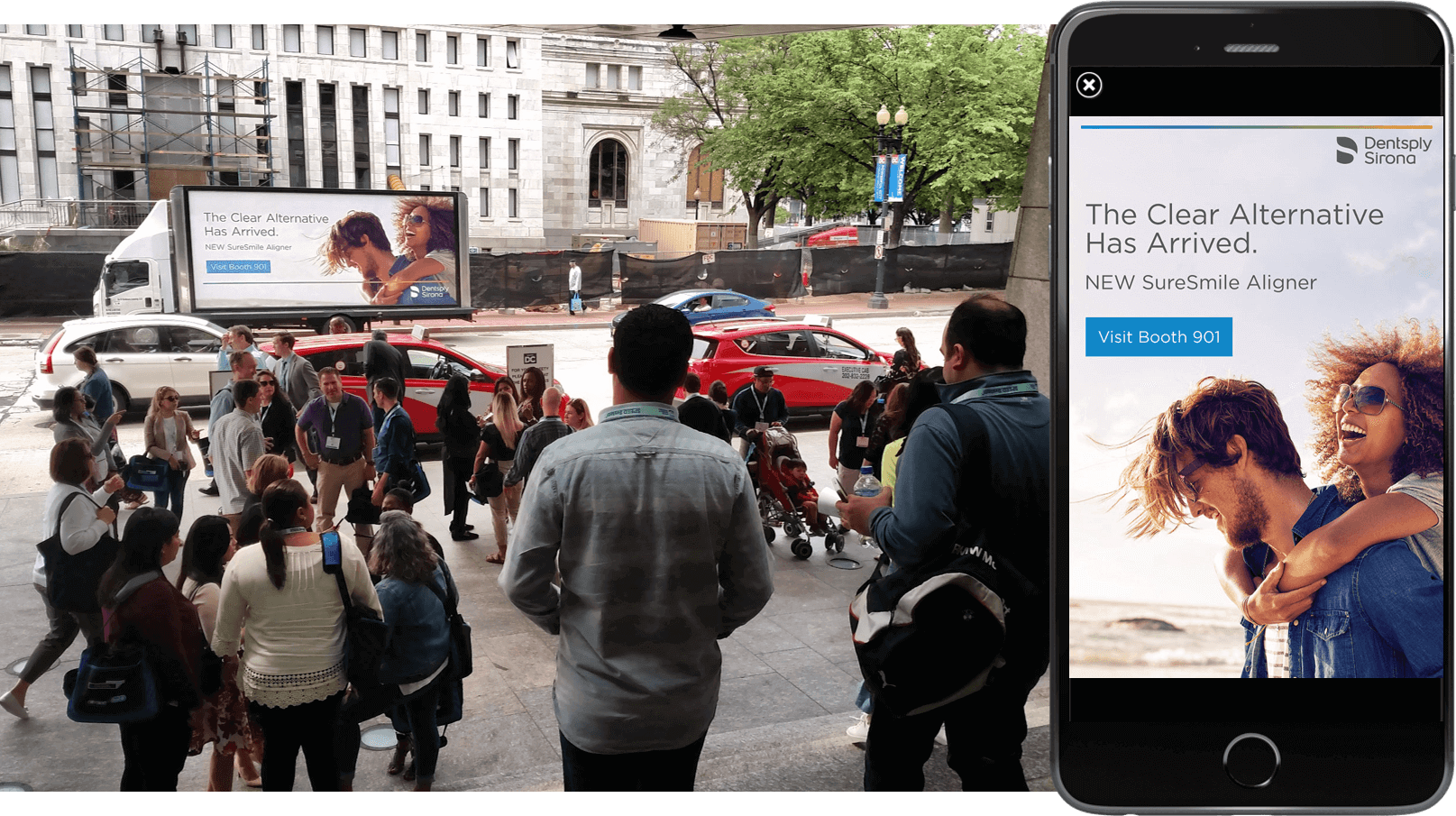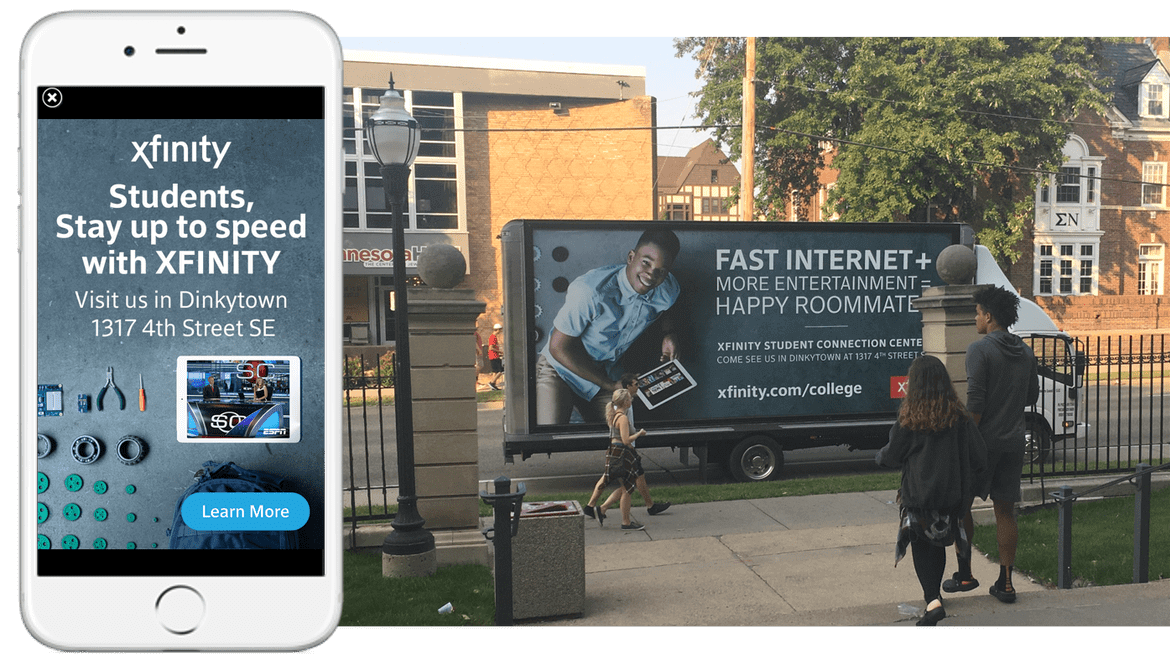
There’s a new innovation that’s sweeping the outdoor advertising nation, and it has everything to do with mobile billboards powered by retargeting technology. On their own, mobile billboards are great at raising brand awareness and hitting places not normally touched by outdoor advertising. They drive past people on their daily commute, reach out to city folk, and just about anyone on their route and radar. They are advertisements on wheels, meant to display large billboards on vehicles; moving billboards with a gleams of hope.
However, more recently, mobile device retargeting strategies are making sure people don’t just SEE a mobile billboard- but FEEL their presence after the ad leaves their eyesight. Mobile billboard trucks are attaching small retargeting devices on them in order to pick up, and sustain, the presence of a consumer. This experience makes for a longer lasting, impressionable advertisement that taps into consumer demographics, location, and online behaviour. It leads to further interaction. Let’s dissect just how mobile device retargeting works, what its components are, and how mobile billboards partner with these technologies to create a more meaningful contact.

How Mobile Device Retargeting Works
Mobile device retargeting is a method used to maximize consumer retention through tapping into a user’s past mobile engagements, web behaviour, and places they’ve visited in order to reach the perfect target for said advertisement. At Movia Media, we use a mobile data management platform to view patterns associated with device IDs to detect, track, and build mobile audiences for brands. Our device IDs are sent to us by ad exchanges, and features unique sets of data not available through Cookies including location, gender, age, and device type.
A mobile user browses a product then, after leaving the page without performing any action, retargeting continues to show those ads to that user for that same product in order to reserve ongoing attention. This leads the user to click on the ad and jump to the advertiser’s page. Mobile performance marketing can be made up of successful retargeting strategies aimed to get specific targets on board through constant exposure. The School of Ad Tech found that, on average, retargeting drives 3 times more sessions per dollar spent on traditional UA, which results in an approx. 48% higher click-through-rate. Retargeting segments users from general web browsers to valuable consumers.

Components of Mobile Device Retargeting
In order to reach the right person, at the right time, with the right message, these factors are quite valuable:
1. GPS Coordinates – we must find out where the consumer spends most of their time, their most frequented locations; this is a focal point for device retargeting
2. Browsing Patterns – what platforms are the consumer taking the most action on; where they are participating
3. Engagement History – how many times is the message going to be retargeted for maximum engagement of ad
4. Gender – what type of product is it meant for, men or women?
5. Device Type – what mobile phone do your consumers have? are they part of Apple, Android, or Google?
6. Age – in order to retarget specifically and effectively, find out what age groups would find the most value in your advertisement
In order to get the best reach for your ad using mobile retargeting devices, consider either Geo-Connect (targeting based on location) or Audience-Connect (targeting based on behaviour). The two can work simultaneously, however the reach will be a lot less broad and potential consumers can miss out on a piece of the buying cake.

A Meaningful Connection
The purpose of mobile billboards teaming up with mobile device retargeting is to, first and forecast, help brands grow on the platforms that consumers are already on. When a truck featuring a mobile billboard passes by a mobile user, they’re counted as a unique impression prone to retargeting technologies that meet them halfway. The distribution of mobile retargeting follows users along their journey, and distributes the advertising campaign in more ways than one. This repeated interaction can lead to highly profitable business.
Consumers exposed to retargeted mobile ads, in a frequent fashion, can be guided to the purchase stage having been already interested. Mobile device retargeting is a highly visible and measurable medium that can drive sales directly to the product/service. Location-based mobile data gives a brand a valid platform to measure a campaign’s success, judging by a user’s deep behavioural patterns. This makes for valuable OOH segmentation that groups interested users together, and molds them into loyal consumers. Mobile device retargeting can be the causation of a consumer’s buying habits.
It’s not as freaky as some may think; it’s actually quite ordinary for marketers to harness mobile device retargeting to create the most measurable impressions. Wouldn’t you want to see ads pertaining to your field of interests? Ads that directly speak to your personalized needs? With mobile device retargeting and mobile billboards, that possibility and technological selection happens geo-naturally.

You’re Headed in the Right Direction
Mobile device retargeting, paired with mobile billboards, is increasingly important in marketing in order to enable consumer value maximization. The brand awareness is unmatched! Consumers will be more likely to take action once they’ve seen a product/service advertisement multiple times on their devices, especially when that product/service is one that they’ve been curious about. These invested moments make for a successful digital experience. In marketing, advertising, and branding, brands should look forward to making this digital mobile touch to help strengthen their honour roll of consumers.
For more information about the unique mobile billboards and mobile device retargeting strategies we offer, check out our retargeting page aimed at maximizing consumer attention and advertiser’s purposes.


